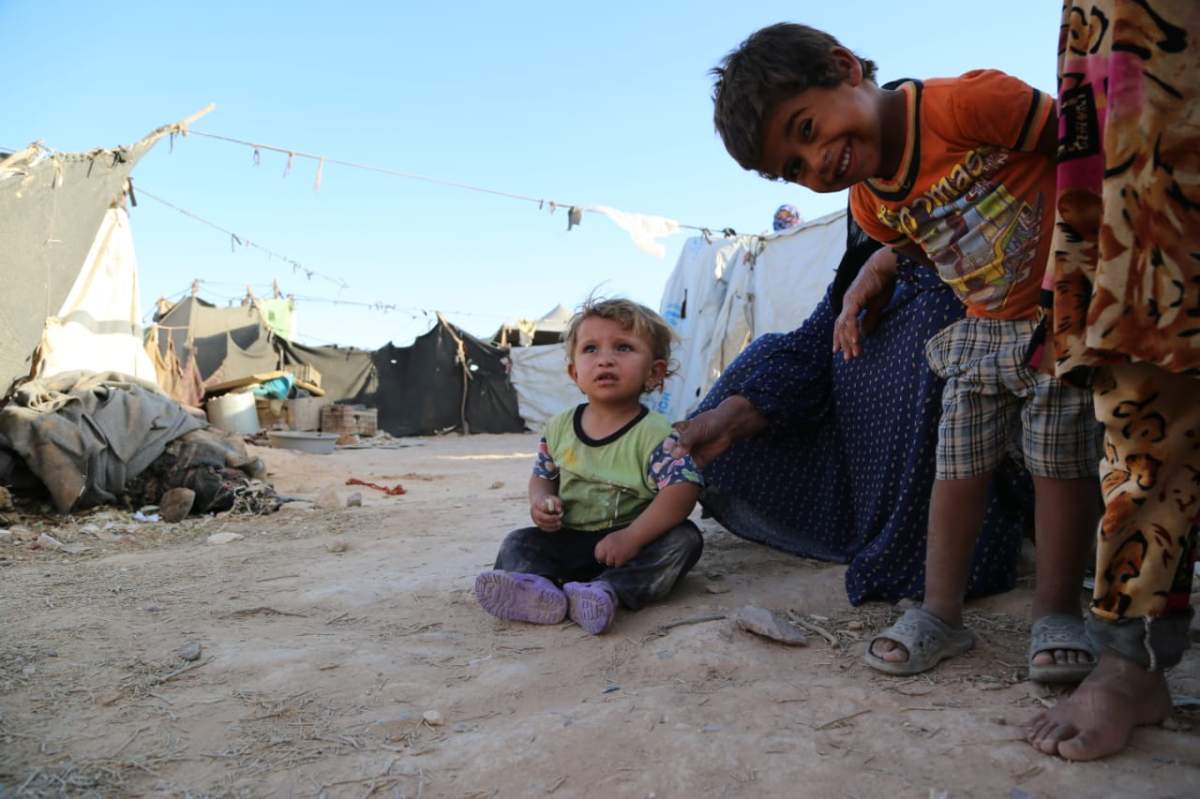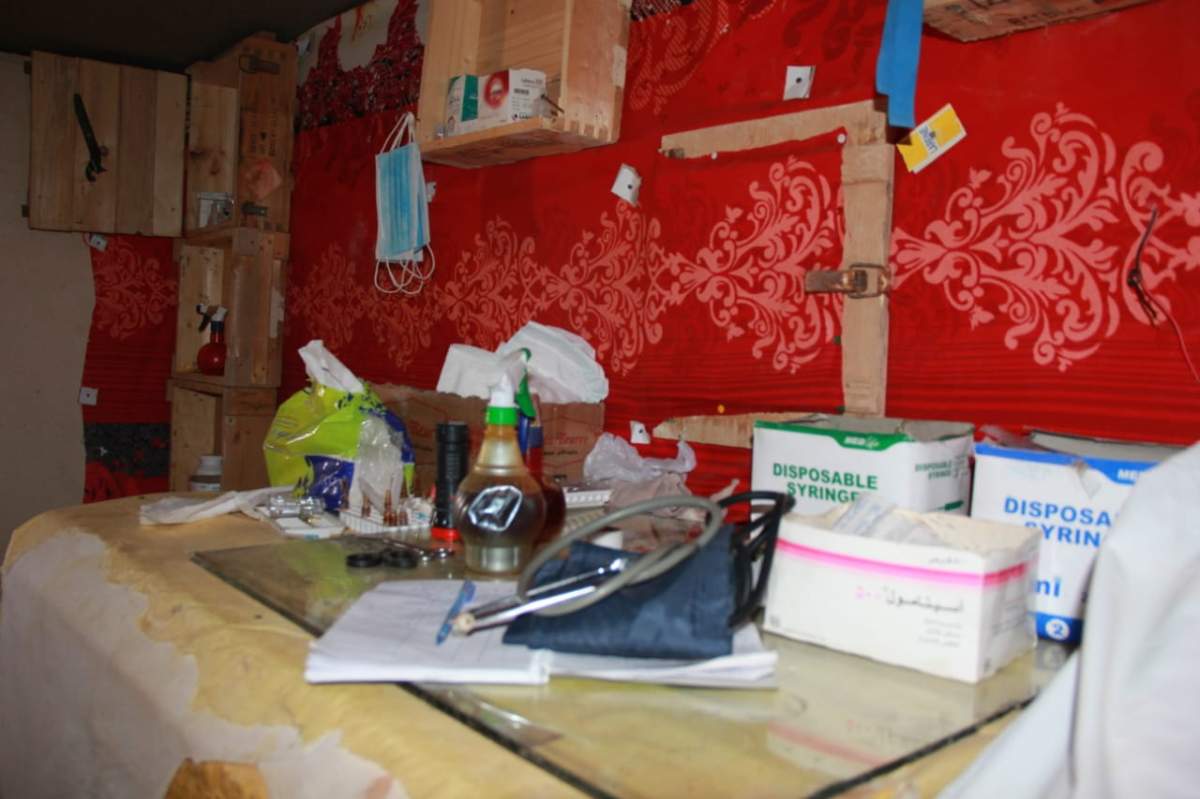Global News is a media partner with Journalists for Human Rights and, as part of that partnership, is proud to provide a platform for updates on JHR programs.

A child named Mohammed, an infant named Huda, and a senior named Fayroze: three Syrians who lost their lives in recent weeks simply because they live in a refugee camp that is besieged.
The over 60,000 residents of the Al-Rukban camp, which spreads across 7 km of Syrian desert near the Jordanian and Iraqi borders, live in extreme environmental conditions and have a lack of access to adequate health care, nutrition or water.
The camp is located in opposition territory, but surrounded by government forces. The closest resources and infrastructure are in Jordan, but complexities over who is responsible and liable for the camp, plus ongoing conflict, makes it impossible to guarantee supplies and aid. The residents have been suffering — including the three named above, who needlessly lost their lives.
This situation is about to change, thanks to a media campaign coordinated just last week by Journalists for Human Rights. The most vulnerable are speaking up, their voices are being heard through a network of Syrian human rights journalists and as a result, authorities are promising to improve conditions in the camp.
In 2016, the year after the camp was established, ISIS moved through it to attack a Jordanian military position. Camp residents’ movement to and from the camp was heavily restricted. And in June 2018, the Syrian government surrounded the camp with military troops and cut off the only road, which had been used to deliver humanitarian aid to the camp. This left the camp’s 60,000 residents besieged on the Syrian side, while facing closed borders on the Jordanian side.
Al-Rukban earned the name “Camp of Death” (Moukhiam Almaout) because its residents were dying in ways unlike what was seen in other camps: from easily treatable illness and a lack of very basic resources.
WATCH: A video report by Journalists for Human Rights partner Nasaem Souria Radio, showing the difficult living conditions in Syria’s Al-Rukban camp, home to 60,000 displaced people.

On Oct. 16, members of the newly formed network of Syrian Journalists for Human Rights published 11 different stories and reports on the “Camp of Death” through five different outlets. These human rights reports, stories and forums reached tens of thousands of people and representatives from the major players were questioned and interviewed, answering to the public and those who are concerned with the living conditions in the camp.
The next day, one outlet, Nasaem Souria, received a voicemail from the head of the relief office in the camp, Mahmoud Hemilie, informing them that they had received a call from a UN office in Damascus promising to begin addressing the camp’s humanitarian problems.

Get daily National news
That afternoon, Reuters and Syrian media reported that the government of Bashar al-Assad had also finally agreed to open a humanitarian corridor and allow humanitarian aid into the camp, in collaboration with the Syrian Arab Red Crescent.
The five outlets, all JHR partners, reported on the same day. The camp’s residents thanked the outlets for giving them a voice and for shedding light on the issue through coverage that focuses on and prioritizes the people.
The independent Syrian newspaper, Sada Alsham, a JHR partner and active member of Syrian Journalists for Human Rights, reported in early October 2018 that a four-month-old infant, Huda Raslan, died due to the lack of formula or access to health services. The newspaper quoted her family in the camp, who stated that for a week the child’s family were trying to get her to a hospital in Jordan, just across the border, but were unsuccessful.
In a video report from the camp, a mother explained to the paper that her five-year-old daughter suffers from unexplained twitching which nurses and medical students — there are no doctors working in the camp — are unable to diagnose, despite the worsening health condition of the child.
Journalist Samer Alahmad, of JHR’s partner Geroun Network, wrote about Azari Darwish, another child who has been refused entry to Jordan for treatment. “Medical professionals have told me to hurry up in treating my daughter before she is fully paralyzed,” said her mother. Fourteen-year-old Azari urgently needs surgery to prevent her knees from curving further as she grows. Her mother says that she has lost hope and has decided to stay silent.
Alahmad, a member of Syrian Journalists for Human Rights, also produced a special report on the most vulnerable people in the camp: women and girls. Sexual and reproductive health and rights (SRHR) are often ignored in the camp. An aid worker stated that, “Twenty women died in childbirth in the past months. It’s very difficult to reach the nearby Jordanian hospital and the camp lacks any actual equipment or medication in its rudimentary clinics.”
Nasaem Souria, a radio station that broadcasts in southern Turkey and northern Syria, broadcast and live-streamed three hours of reports and interviews and engaged those who have answers, or could help with finding them.
Another partner of JHR, Ein Infographic, a magazine specializing in data and infographics, produced a special issue covering the camp’s security, education, health, water and civic situation. Significantly, the report noted the weakness and fragility of the administrative structure of civic and public entities within the camp itself. It illustrated how some of the problems could be solved despite the security situation, in particular, water and health care, with stronger administration.
The news site Human Voice published a photo essay, clearly outlining the dire conditions in the camp, and a video that showed the residents of the camp not just as victims of conflict and neglect and impunity for predators but also as individuals who are aware of their rights and protesting so the world would hear their voices.
WATCH: Video by Human Voice showing conditions in the “Camp of Death” (in Arabic)
Residents from the camp called JHR’s partners to express gratitude for the role the media had played so far and stressed the need to continue the work to address the problems through a comprehensive approach. Residents, reporters and aid workers have expressed a fear that the Syrian government won’t follow through on its promises of opening up a humanitarian corridor, or will disrupt the process — and that without sustained media attention the gains will be reversed.
JHR continues to work with its network of journalists and reporters in collaboration with aid and civil society organizations to solve the issue from the ground up and in so doing, help save the lives and protect the human dignity of the 60,000 people trapped in the Camp of Death.
This outcome was supported by the United Nations Democracy Fund.









Comments